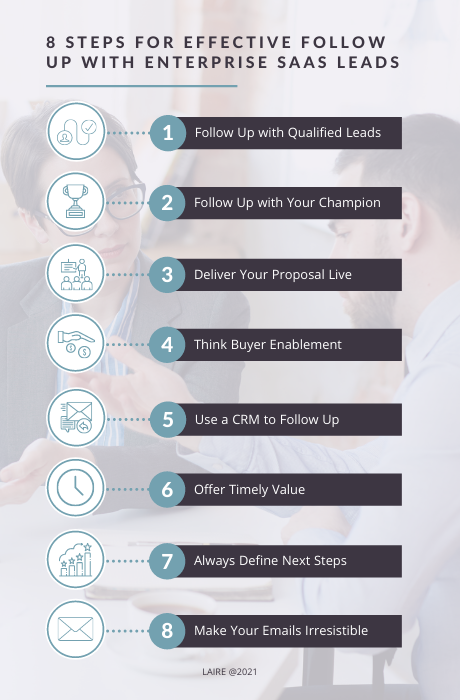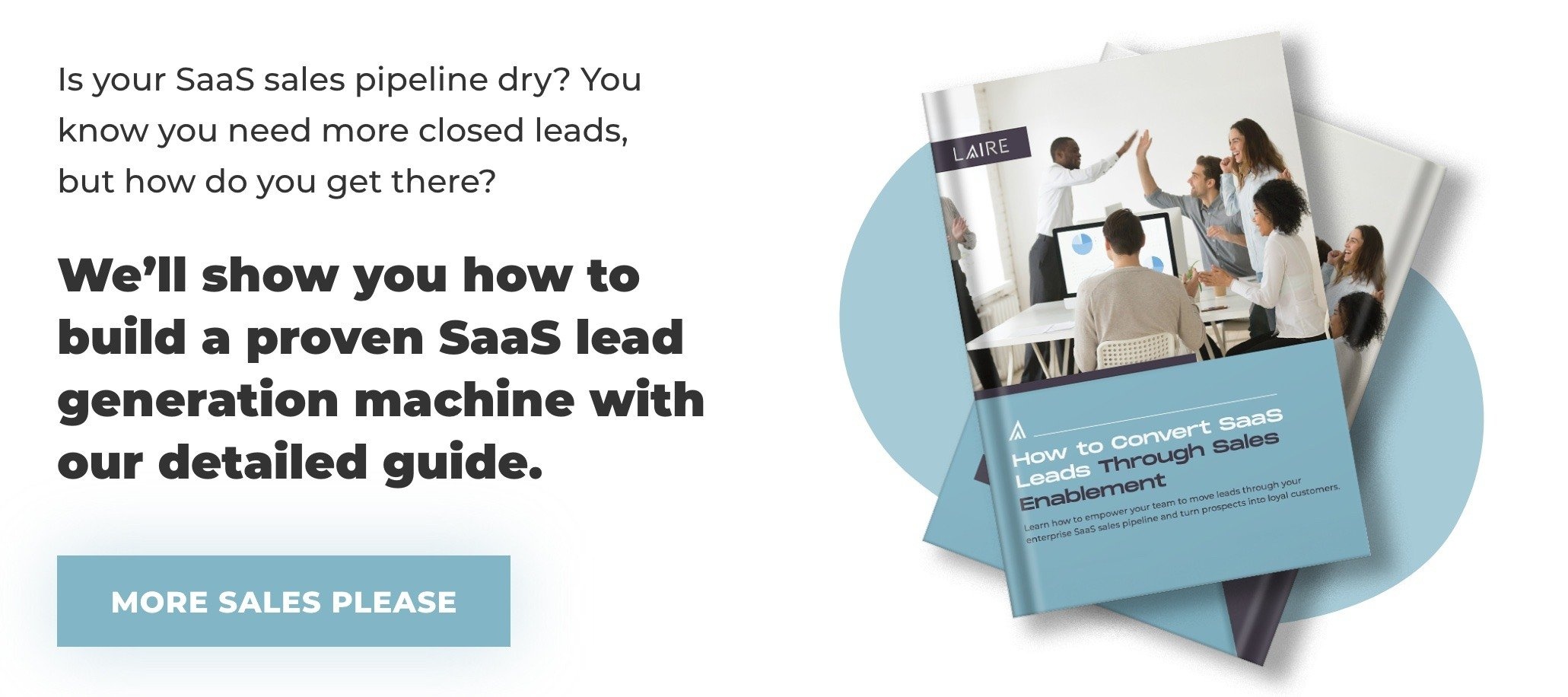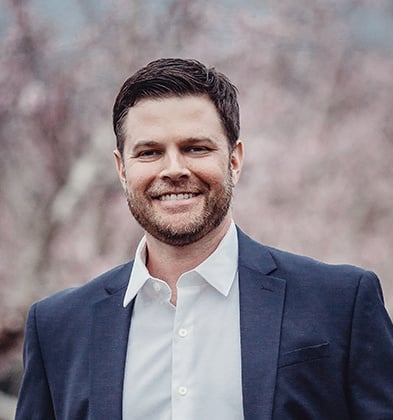If you want to succeed at enterprise SaaS sales, you must excel at follow up. Enterprise SaaS sales cycles are notoriously long and complex, involve multiple stakeholders, and feature more steps and stages than the sales cycles for consumer-grade SaaS.
This means you must work harder to keep your leads and prospects engaged. Success goes to the sales teams that keep their buyers engaged and educated throughout the sales cycle. And that means strategic, consistent follow up. Here are eight tips for following up with enterprise SaaS leads.

1. Follow Up with Qualified Leads
You don’t have to be in enterprise sales for long to discover that some of the leads that the folks in marketing hand you are not qualified. Sometimes this is the fault of mis-matched definitions, but other times it is the result of faulty buyer expectations.
To eliminate the problem of mis-matched definitions, work with marketing to create a definition of what a sales qualified lead is, and what it is not. To overcome the problem of faulty buyer expectations, work with marketing to ensure that their lead-generation methods generate leads who want to talk to sales.
For example, we know of a company that offers a free audit on their website. The wording of the offer makes it sound like the website visitor is going to get an automated audit, one that requires no interaction with a salesperson. But what the company is expecting is to follow up with every lead who requests the free audit. No wonder leads ignore the phone calls and follow up emails from the sales team. They don’t expect them, or want them, so they don’t answer them.
To improve your results, only follow up with leads who expect to hear from you and who you know are qualified to buy.
2. Follow Up with Your Champion
Enterprise SaaS buying decisions are always made by a committee. This committee typically consists of 6 to 10 stakeholders, each with their own set of needs, backgrounds, goals and perspectives.
The thing to remember about stakeholders on buying committees is that some have more decision-making power or influence than others. A typical buying committee consists of four personas:
- Decision makers, who have the final decision
- Champions, who drive the purchase internally, especially in the early stages
- Influencers, who have influence over the outcome
- Users, who will use your SaaS product
Since you have neither the time nor the inclination to follow up with six or more individuals on a buying committee, you should target only the individuals who are most likely to embrace your value proposition. These individuals tend to be the decision champions, the people drive the purchase internally, especially in the early stages. These are the people you should target with your prospecting. And these are the people you should follow up with.
3. Deliver Your Proposal Live
Nothing is more frustrating in enterprise SaaS sales than sending a detailed proposal to a potential client, only to hear crickets. You know the drill. You conduct a discovery call. The prospect sounds excited and ready to move ahead. So, you spend hours crafting a customized proposal, and send it by email.
You wait a week. You follow up by email. No response. You follow up again. No answer. You pick up the phone. All you get is voicemail. This situation is so commonplace that there is now a name for it. It’s called Getting Ghosted.
The most effective way to avoid this waste of your life is to never send proposals. Always deliver them live and in person. Book a proposal call with your prospect, make sure all decision makers will be on the call, then present your proposal live. This way, nothing gets lost in translation. And you are there to immediately answer any questions or concerns. As a bonus, the buyer has no opportunity to ghost you.
4. Think Buyer Enablement
Your buyers must complete a number of critical steps along their buyer journey before they can buy your solution. They must educate themselves about their challenge, investigate viable solutions, research and compare vendors, and plenty more.
Your goal with your follow up is to help your buyer make their buying decision. You do this by first understanding your buyer and their buyer journey, and then by creating buyer-focused content that educates, answers questions, answers objections, and in other ways helps your buyer move along their journey to purchasing your solution.
This means changing the way you think of the content you create. Instead of creating sales-enablement content, create buyer-enablement content. Create content that doesn’t depend on your team’s ability to sell, or on your marketing department’s ability to market. Instead, create white papers, buying guides, case studies, product comparison charts, use cases, and other content that enables your buyer personas at each stage of their buyer journey.
5. Use a CRM to Follow Up
The path to lost opportunities is paved with good intentions. Salespeople are known for being confident in their abilities and optimistic about hitting their targets. But in enterprise SaaS sales, as in so many areas of business, life has a way of getting in the way.
To be effective, follow up must be strategic and consistent. It can’t depend on the memories of salespeople. It can’t rely for its effectiveness on sticky notes, tasks and to-do lists stored on laptops, or calendar reminders stored on individual accounts.
To be effective, enterprise SaaS sales follow up requires an enterprise SaaS CRM, one that stores all customer data, all activities, all reminders, all communications, and all tasks in one central place, accessible to the entire sales team.
A CRM improves your efficiency, improves customer service, organizes your data, prioritizes tasks, and ensures that all leads get followed up on—and never get neglected or ignored again.
6. Offer Timely Value
Your buyers have different needs at each stage of their buyer journey. They will welcome your follow-up calls when you offer value based on the stage they are in. To be valuable, anything you offer must be both timely and relevant. In other words, it must arrive just when your buyer needs it, and it must address an issue or concern they have (and not simply offer generic advice or solutions).
Aim for timeliness by documenting in your CRM where each buyer is in their journey. And aim for relevance by keeping detailed notes (again, stored in your CRM), of your buyer’s needs, concerns, challenges, obstacles, questions and more.
When you track where your buyers are in their buyer journey, and what they need at each stage, you ensure that your follow-up phone calls and emails are always timely and always relevant. You always say the right thing, to the right buyer, at the right time.
7. Always Define Next Steps
Success at enterprise SaaS sales all comes down to negotiating a series of steps that start with a cold lead and end with a new customer. Each of these steps follows a predictable order and pattern. Which means you always know what the next step is after you complete your current one. So, make sure you also communicate next steps with your buyer.
For example, if your prospect asks for a week to discuss your proposal with other team members, agree with your prospect on the day and the time you will follow up. The secret to communicating next steps is specificity. Don’t be vague, saying you will follow up “next week.” Be specific. Say, “I will phone you next Wednesday at 2pm Eastern Time to follow up. How does that sound?”
8. Make Your Emails Irresistible
If you are like most enterprise SaaS salespeople, you live in your email inbox. And your favorite method of follow up is email. Email also happens to be the preferred channel that your buyers like to use when corresponding with salespeople. But just remember that your success at email follow up depends on the strength of your emails.
Here are some best practices for improving the power of your email follow up:
- Entice with your subject line. Never put “Just checking in,” in your subject line. Instead, use a question or the prospect’s name or something else that is likely to intrigue the prospect into opening your message.
- Offer value. Mention early on that you have something to give your prospects, whether a link to a helpful blog post, a white paper to download, a complimentary assessment, or something else of value.
- Keep it short. Write a few sentences, then stop.
- Ask for action. If you are offering something of value, invite the reader to click your link or reply to your email. If you are offering a free assessment, ask for an appointment.
A Digital Marketing Agency for SaaS Teams
According to a study conducted by Brevet, 92% of sales reps give up after placing their 4th follow-up call. But 80% of prospects say no four times before they say yes. Which means you will boost your success rate in enterprise SaaS sales simply by following up more than four times. Just make sure that your fifth and subsequent follow-up calls are with qualified leads, help them make a decision, are both timely and relevant, and offer value.
This blog is part of a six-part sales enablement series. Please find links to the remainder of the series below:
Chapter 1: Seven Unique Challenges Facing Enterprise SaaS Sales Teams
Chapter 2: Six Keys to Effective Sales Enablement for Enterprise SaaS Sales Teams
Chapter 3: Why (and How) Follow-Up is the Key to Enterprise SaaS Sales Success
Chapter 4: Eight Steps for Effective Follow Up with Enterprise SaaS Leads
Chapter 5: Six Rules for Email Follow Up with Enterprise SaaS Leads
Chapter 6: Five Ways to Create Sales Enablement Content that Moves Leads Along Your SaaS Pipeline


